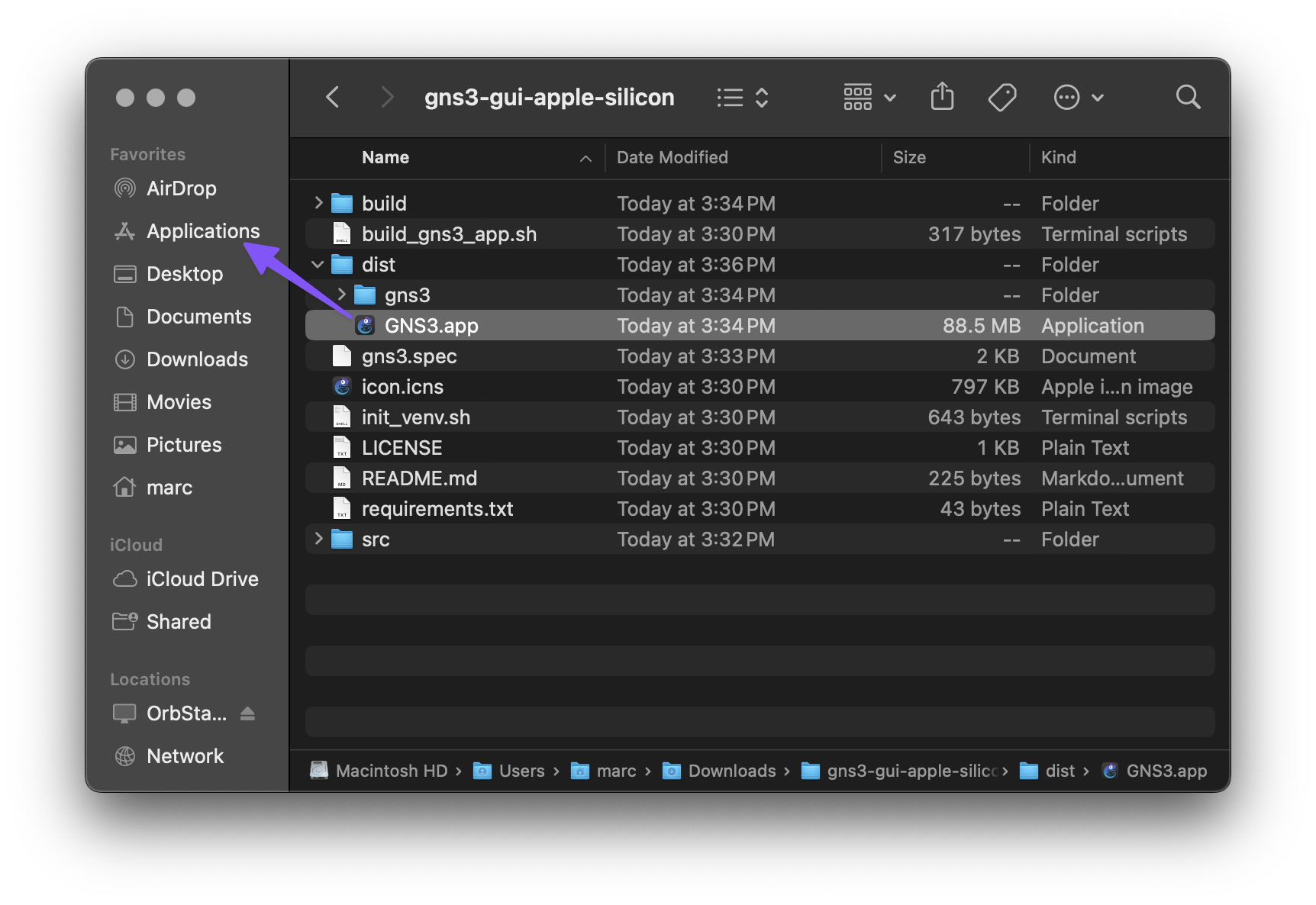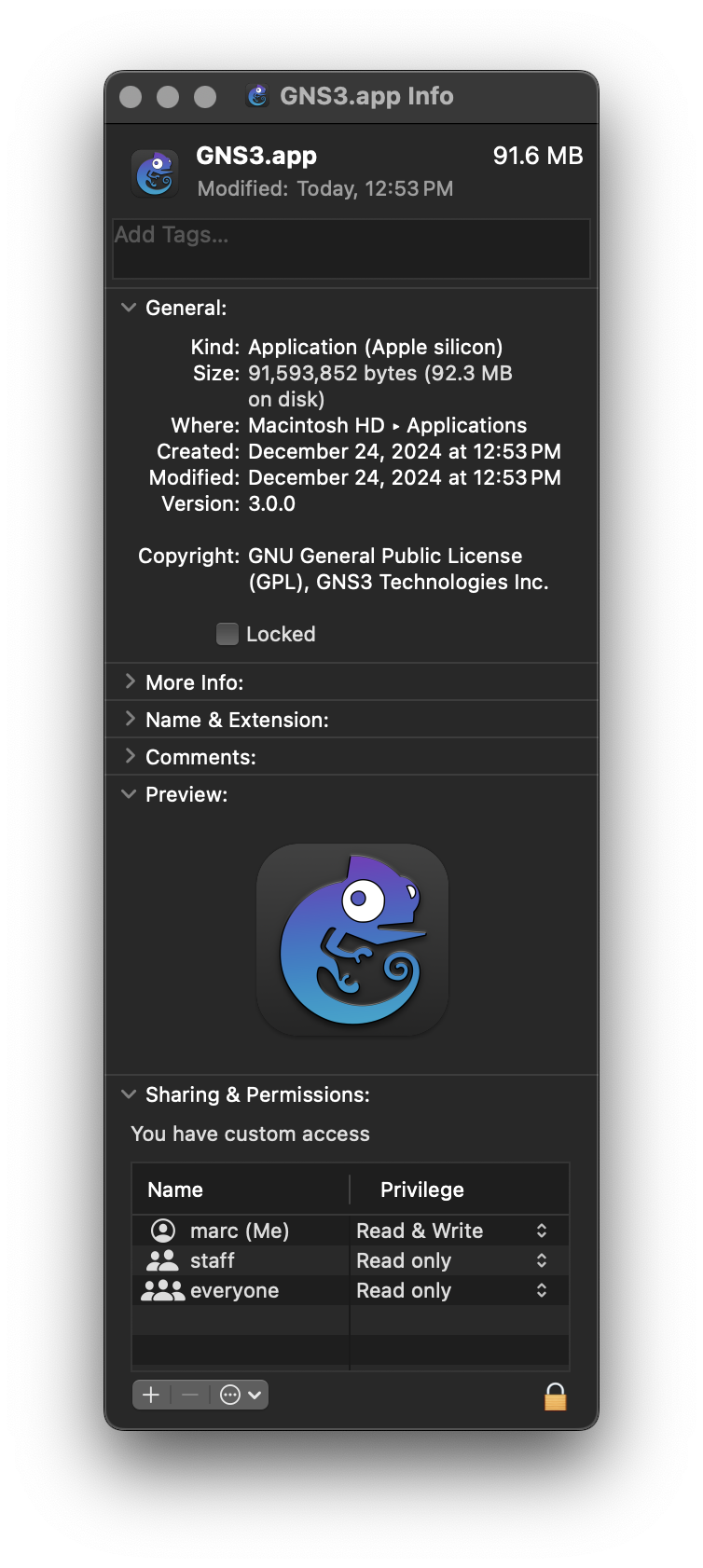As of the date of this post, GNS3 does not provide a native client for macOS on Apple Silicon. This post aims to address that issue. While this post serves as a companion to GNS3 with macOS on Apple Silicon , the GNS3 client described here will also function with other types of remote GNS3 servers.
Prerequisites
Steps
- Open your favorite terminal emulator.
We will be working from the command line for the majority of the following steps.
- Change to the
Downloadsdirectory.
cd ~/Downloads
- Clone the gns3-gui-apple-silicon repo from GitHub.
git clone https://github.com/mweisel/gns3-gui-apple-silicon.git
- Change to the
gns3-gui-apple-silicondirectory.
cd gns3-gui-apple-silicon
- Get your GNS3 server version.
If using GNS3 on Apple Silicon , run the following command:
curl -s http://gns3.orb.local:3080/v3/version
output:
{"controller_host":"127.0.0.1","version":"3.0.0","local":false}- Clone the gns3-gui repo from GitHub.
My GNS3 version is 3.0.0, so I run the following command:
git clone --depth 1 --branch v3.0.0 https://github.com/GNS3/gns3-gui.git src
- Display the
versionplaceholder value in thegns3.specfile.
grep version gns3.spec
output:
version='VER',- Replace the
versionplaceholder value.
Again, my version is 3.0.0, so I run the following command:
sed -i '' -e 's/VER/3.0.0/' gns3.spec
- Verify the change for the
versionvalue.
grep version gns3.spec
output:
version='3.0.0',- Create a Python virtual environment.
source init_venv.sh
- Verify PyInstaller is available.
pyinstaller --version
- Build the GNS3.app.
sh build_gns3_app.sh
- Deactivate the Python virtual environment.
deactivate
- Move the GNS3.app from the dist folder to the Applications folder.

- Bring your own Telnet (BYOT).
The telnet binary is not included in the GNS3 application bundle. Refer to Alacritty with GNS3 on macOS
for a solution.
- Verify the goods.
file -b /Applications/GNS3.app/Contents/MacOS/gns3
output:
Mach-O 64-bit executable arm64
